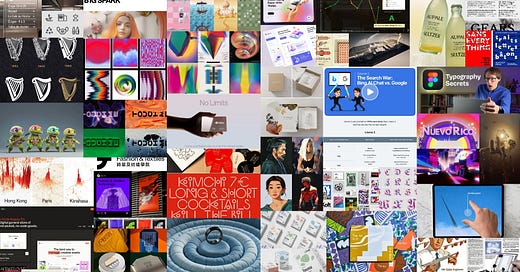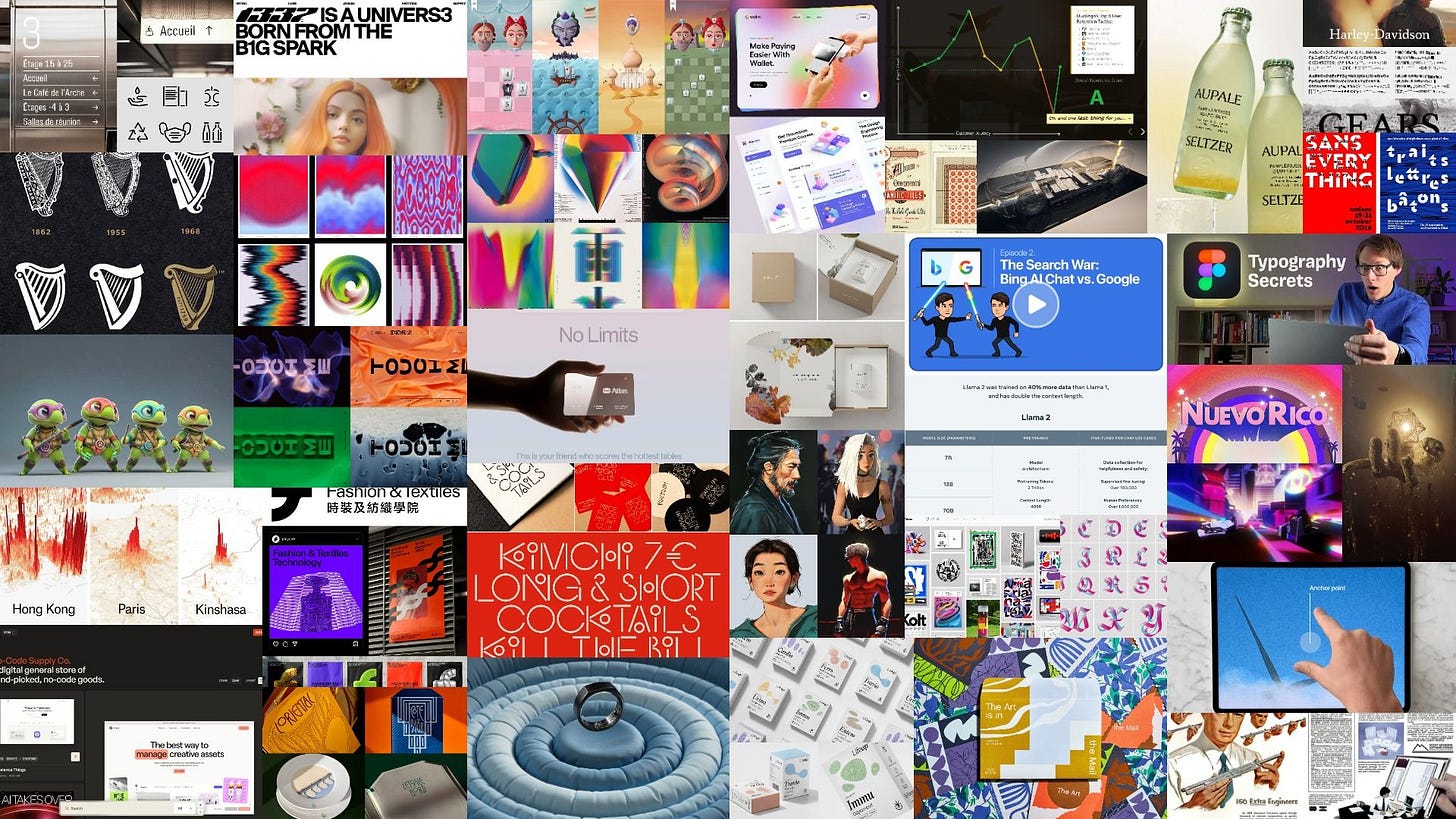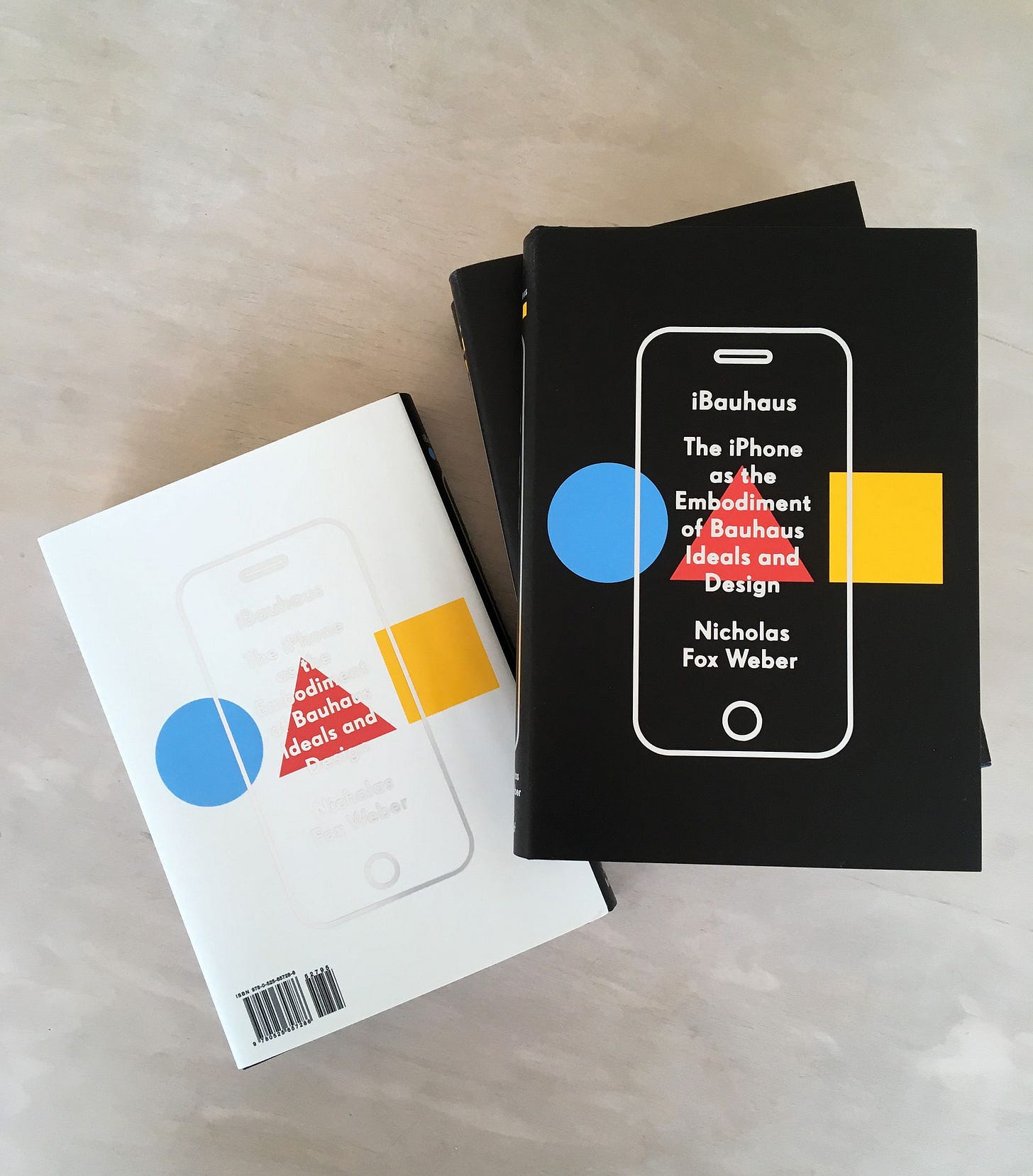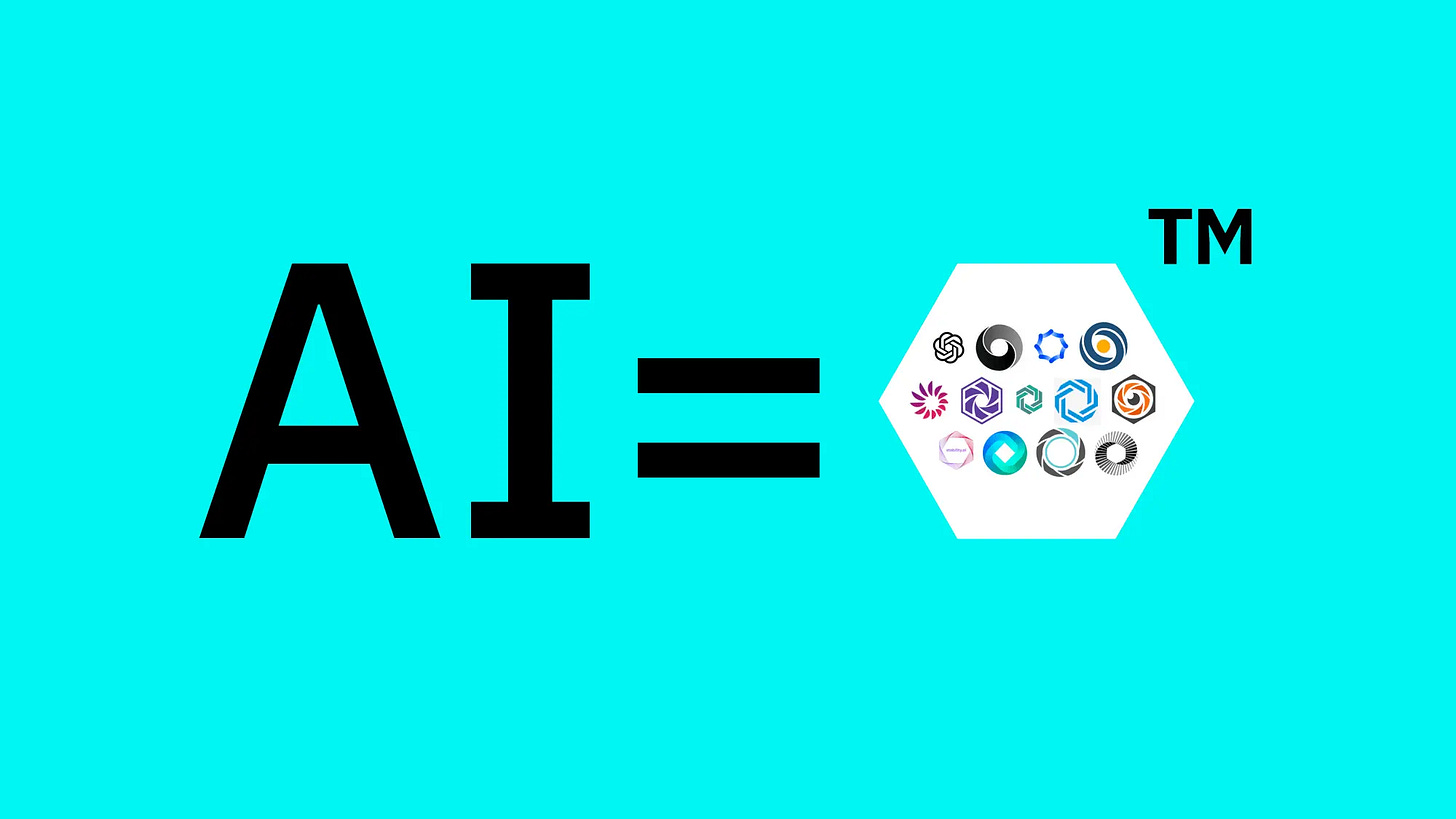Issue 59: Plasticine interfaces on the density maps
How inconspicuous details affect the quality of interactive design; Useful tips for working with typography in Figma; Proven Tactics to hold users from Duolingo and so much more!
Hello, dear readers! 👋
In this issue, among other things:
How automation with AI will affect the labor market
Lecture by the famous mathematician Richard Hamming on how to do outstanding work
How inconspicuous details affect the quality of interactive design
7 useful tips for working with typography in Figma
Why do AI companies use hexagon in logos
8 Proven Tactics to hold users from Duolingo
A brief overview of the new AI search in the Bing browser
Why is the age of the universe 2 times more than we thought
What is the difference between creative and uncreative people
Quotes from "iBauhaus: The iPhone as the Embodiment of Bauhaus Ideas and Design" by Nicholas Fox Weber
Enjoy reading!
📚 Book quotes
This week I suggest you another book by Nicholas Fox Weber "iBauhaus: The iPhone as the Embodiment of Bauhaus Ideas and Design" Review the quotes and decide whether to read or not:
Observation precedes vision.
From Plato: “The measure of a man is what he does with power
Know your materials! See the most minute nuances! Savor them! God is in the details.
And all of them were obsessed with the appearances of the objects that served their quotidian needs.
If a glass tabletop was half a centimeter thick, its support and legs precisely doubled or tripled that measure. The iPhone also depended on the exact relation of proportions, so that a sense of rightness enters the user.
The Bauhaus fights against the cheap substitute, inferior workmanship, and the dilettantism of the handicrafts, for a new standard of quality work.
Now, what made something work well was in and of itself the core of its aesthetic quality.
To reduce apparent details was to increase emotional and physical ease.
For those who see austerity and affordability and lack of chic as vital elements of the forms of beauty that last, the betrayal of those values is here.
To be true to the Bauhaus is not to follow a “style.” It is to maintain impeccable standards, consider every nuance, and make successful functioning the priority.
The panoply of consumers has iPhones or the lower-priced clones not because of what they represent but because of what they do.
Once you had a solid base and sufficient knowledge, and respect for the essential facts and real needs of life, nothing rivaled careful observation and contemplation fired by a passion for the invention of new means for experiencing life.
Bauhaus design at its best demonstrates that the ordinary and the everyday, when addressed with discernment and tastefulness, have a candor and clarity that calm the insides.
🗞 News and articles
Transcript of the lecture of the famous American mathematician Richard Hamming "You and Your Research", which he read in 1986.
The lecture is devoted to the answer to the question "How to do outstanding work". And although Hamming talks about scientific work, I am sure that these principles and approaches are applicable in any creative activity. And that these are important principles.
Here are a few quotes:
One of the characteristics of successful scientists is courage. When you become brave and believe that you can do important tasks, then you can. If you think you can't, you almost certainly won't.
Bod said this: "Knowledge and productivity are like a cumulative percentage." Take two people of approximately equal ability, one of whom works ten percent more than the other, and he will eventually be more than twice as productive.
..it is necessary to manage yourself like this: when you have a really important task, you should not allow anything else to occupy the center of your attention — you should keep your thoughts on the task. It is necessary to starve the subconscious mind so that it has to work on your task so that you can sleep peacefully and get an answer in the morning for free.
I have now come to a very tasteless topic. It's not enough to do a job; you have to sell it. "Selling" is a very awkward occupation for a scientist. It's disgusting; you don't have to do it. The world, in theory, should be waiting, and when you do something great, they should rush in and applaud. But the fact is that everyone is busy with their own work. You have to present the work so that they put aside their classes, look at what you did, read it, come back and say, "Yes, it was good."
Figma Typography Secrets — Seven Pro Tips Revealed
Oliver Schendorfer has prepared 7 useful tips for working with typography in Figma. After reading the article you will learn:
Change the font all over the layout at once, even if there are no styles
Set the maximum number of lines in a text component
Set the line height, which will change depending on the font size
Use OpenType functions
Create hanging punctuation marks
Manage variable fonts
Set the edges of the text element along the top edge and the font baseline. Useful when aligning text vertically in buttons
Bringing 19th century ornamental tile illustrations into a 21st century web app
Deepak Gulati discovered a scan of the catalog of colored granite slabs of the late 19th century and based on it created a web application in which you can create various patterns. In the article, he also talks about how to get different results by rotating, reflecting and combining tiles.
Benedict Evans wrote a detailed article about how automation of work with AI can affect the labor market, why previous waves of automation did not leave people out of work, but created new jobs, and what changes humanity can expect this time.
The main thoughts from the article:
According to the Jevons paradox, automation and increased labor efficiency does not lead to a decrease in demand for human resources, but to its growth
New technologies, as a rule, reduce the cost and simplify the task. You can do the same thing with fewer people or you can do much more with the same people. Business will choose the second
Automation of labor with the help of AI will happen faster than with the advent of computers, which means that it will be more difficult for people to adapt
With the advent of computers, it took a considerable time for new machines to be used en masse. In the case of AI, it is enough for a person to open a website. Nevertheless, the emergence of generative AI in the workplace will take years, not weeks
The introduction of AI into business processes is a complex procedure that requires human control over security, access levels and a number of other parameters
In addition to human control, the deployment of new technology takes time, and large companies have good reasons not to change their workflow suddenly. The future takes time, and the world outside of Silicon Valley is complicated
The future of LLM lies in the transition from a chat with prompts to a graphical interface with buttons. The creation of promts and natural language contradict each other
It is possible that the appearance of LLM will combine many functions into one application (bundling), but it is also possible that this will give rise to an even greater division into separate narrowly focused products (unbundling). Confirmation of this theory is the emergence of a huge number of AI-based SaaS applications that can solve problems that were not considered problems before
AI makes mistakes quite often, but at the same time it is confident in its rightness. It cannot be used as a reliable source of information or database
Only a universal self-learning AI (AGI) that does not err and does not make mistakes could truly replace a person. But it is not there yet, which means that we are waiting for the same ordinary wave of automation that has been happening for the last 200 years
Invisible Details of Interaction Design
Rauno Freiberg spoke about how small and inconspicuous details can greatly affect the quality of interactive design. Using the example of iOS, iPadOS and several web applications, he analyzed animations and UX patterns that seem insignificant, but are actually well thought out and teach the user new levels of system functionality.
He also explained why some animations and principles of interaction with interfaces are taken from the real world and how they relate to our instinctive behavior.
In conclusion, Rauno added that it is important to conduct your own analysis and understanding of the design. This allows you to develop taste and improve your own skills in designing.
⚡️ Briefly
The Search War: Bing AI Chat vs. Google. Growth Design gave a brief overview of the new AI search in Microsoft's Bing browser and told what can be improved in it.
Growth.DesignLouis-Xavier Lavallée
Growth Design talked about 8 proven tactics that Duolingo uses to retain users.
The AI boom is creating a new logo trend: the swirling hexagon. James Bowie talks about how the hexagon has become a hallmark of the logos of AI companies. According to research, hexagons are 4.6 times more common in the logos of AI companies than in the rest.
New technologies
Meta has released a new open source language model LLaMa-2, which is available for commercial use completely free of charge. It contains up to 70 billion parameters, is comparable in quality to GPT-3.5, and even surpasses its competitor in some benchmarks. At the time of publication, pre-trained models with 7, 13 and 70 billion parameters are available.
The model allows you to build your own local ChatGPT analogues on its basis, without having to send data anywhere. Perplexity.ai we have already launched our own chat based on LLaMA-2, which is available to everyone.
🧘 Inspiration
School of Fashion and Textiles. A fresh modern identity of the Hong Kong "School of Fashion and Textiles" with dynamic patterns based on the logo, bright shades and 3D graphics. The main feature of the project was 3D versions of the logo with textures of fabric and other materials.
Keep reading with a 7-day free trial
Subscribe to bezier.design to keep reading this post and get 7 days of free access to the full post archives.















